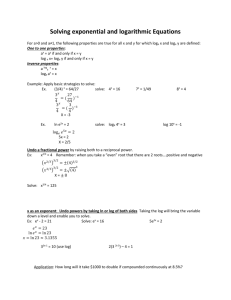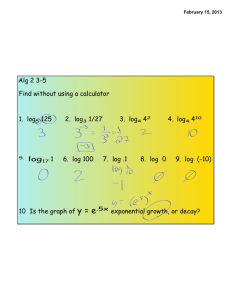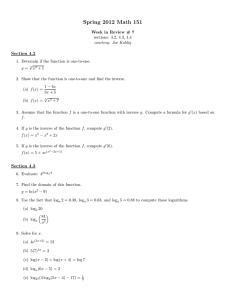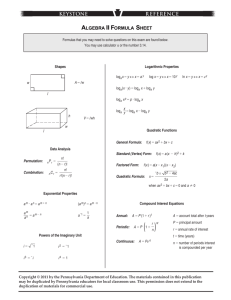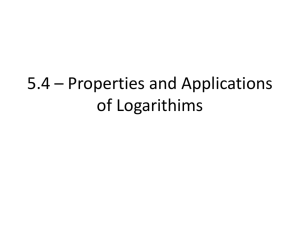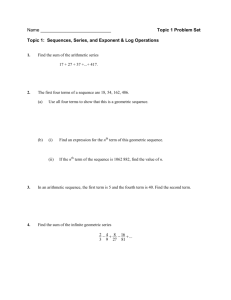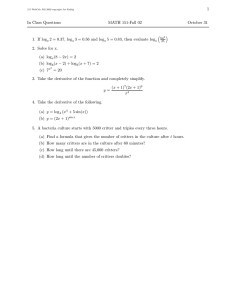Review for third exam
advertisement
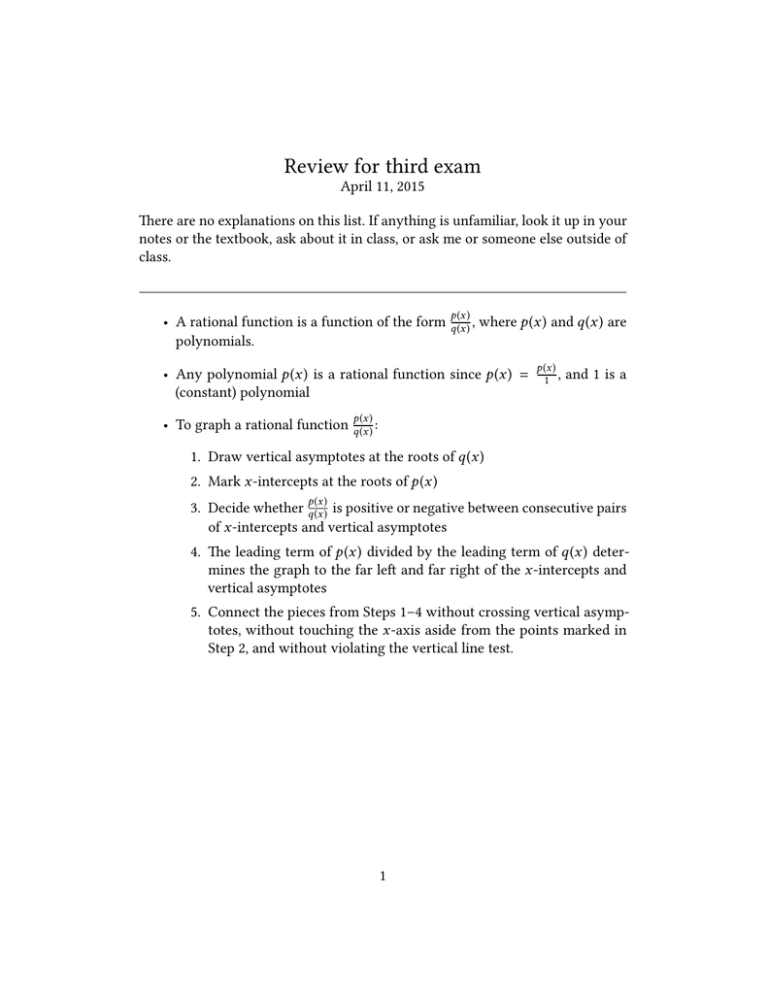
Review for third exam April 11, 2015 There are no explanations on this list. If anything is unfamiliar, look it up in your notes or the textbook, ask about it in class, or ask me or someone else outside of class. • A rational function is a function of the form polynomials. p(x ) q(x ) , where p(x ) and q(x ) are • Any polynomial p(x ) is a rational function since p(x ) = (constant) polynomial • To graph a rational function p(x ) 1 , and 1 is a p(x ) q(x ) : 1. Draw vertical asymptotes at the roots of q(x ) 2. Mark x-intercepts at the roots of p(x ) p(x ) 3. Decide whether q(x ) is positive or negative between consecutive pairs of x-intercepts and vertical asymptotes 4. The leading term of p(x ) divided by the leading term of q(x ) determines the graph to the far left and far right of the x-intercepts and vertical asymptotes 5. Connect the pieces from Steps 1–4 without crossing vertical asymptotes, without touching the x-axis aside from the points marked in Step 2, and without violating the vertical line test. 1 • On this page and the next page, a > 0 and a , 1: – loga (ax ) = x and a loga (x ) = x – Graphs: ax if a > 1 ax if 0 < a < 1 1 1 loga (x ) if a > 1 loga (x ) if 0 < a < 1 1 1 2 – Rules for exponents: ax ay ax ay 1 ay a0 (ax )y an/m = ax+y = ax−y = a −y =1 = axy √ √ m = an = ( m a)n if n, m ∈ N – Rules for logarithms: loga (zw ) loga (z/w ) loga (1) loga (zw ) = loga (z) + loga (w ) = loga (z) − loga (w ) =0 = w loga (z) – To solve for x in an exponential equation: 1. Make equation look like a f (x ) = c 2. Rewrite as f (x ) = loga (c) 3. Solve for x – To solve for x in a logarithmic equation: 1. Make equation look like loga ( f (x )) = c 2. Rewrite as f (x ) = ac 3. Solve for x 3 • Example of a piecewise-defined function: x 2 − 1, д(x ) = x − 1, 3, if x ∈ (−∞, 0] if x ∈ (0, 4] if x ∈ (4, ∞) • Example: Evaluate д(3): 1. Determine the set to which x = 3 belongs. 2. Plug x = 3 into the rule corresponding to the set to which it belongs. 3 ∈ (0, 4], therefore д(3) = 3 − 1 = 2. • Graphing a piecewise-defined function: 1. Graph each part of the function separately. Use an open circle when a point is not in the graph and a filled-in dot when a point is in the graph. 2. If an open circle from one part of the function coincides with a filled-in dot from another part of the function, only draw a filled-in dot. • Absolute value function: – Definition: −x |x | = x if x ∈ (−∞, 0) if x ∈ [0, ∞) – x − y is the distance between x and y – |x | < c means −c < x < c – Rules: 1. |ab| = |a| |b| 2. |a − c | ≤ |a − b| + |b − c | (the triangle inequality) 4 • A linear equation in two variables: ax + by = r (as long as a and b are not both 0). – a, b ∈ R are the coefficients, r ∈ R is the constant, and x, y are the variables. – The solution of a linear equation in two variables is a line in R2 : 1. If b = 0, it is a vertical line: x = ar . 2. If b , 0, it is not vertical: y = − ba x + br . • A linear equation in three variables: ax + by + cz = r (as long as a, b, and c are not all 0). – The solution of a linear equation in three variables is a plane in R3 . • A system of equations is a collection of equations. – A solution to a system in two variables is a specific value of x and y that is a solution to every equation in the system. – A system of linear equations will have either zero solutions, one solution, or infinitely many solutions. ∗ A system of linear equations in two variables will have exactly one solution if the two corresponding lines in R2 have different slopes. • Finding the solution to a system of two linear equations in two variables: 1. Solve for x in the first equation. 2. Substitute for x in the second equation. 3. Solve for y in the second equation. 4. Substitute for y in Step 1 to find x. 5

